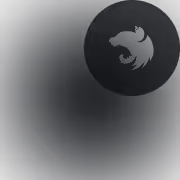How team augmentation got an ambitious fintech startup off the ground

Project overview
A story of a small fintech app that overcame the challenge of unscalable architecture and got acquired by a leading Swiss bank.
Inside this article
Introduction
Starting with purely technical support and transitioning to full product development, our cooperation with GOKONG abounded in challenges — from dealing with workflow-breaking streams of data to defining Unique Value Proposition to adjusting internal processes.
It’s been a wild ride that left us feeling accomplished and victorious.
Here's a story of an ambitious fintech startup building an app that intrigued a Swiss banking leader. With us on board from the very beginning.
Brainhub was engaged in this project from the very beginning and played a significant role in UI/UX design and implementation.
Alex Semenets, CTO of GOKONG
Project in numbers

Challenge
Let's build a personal finance coach
Inspired by the growing popularity of health monitoring apps like Apple Health and Fitbit, GOKONG founders wanted to help people track and manage their personal finances in a smart way.
Just as you are able to monitor your heart rate, activity level, and sleep patterns, GOKONG was designed to let you measure your financial health in a holistic way — from analyzing your spending habits, to tracking your investments, loans, mortgages, and debts — all on multiple bank accounts at the same time.
Become the industry's new golden standard
GOKONG’s vision was to become a widely adopted industry gold standard, used daily by millions of users around the world.
Laying a solid foundation for both the product’s and business’ rapid growth was the team’s biggest priority.
The company feared that failing to fulfill this assignment would halt its business expansion.
Prepare the WIP web app for a rapid growth
When Oliver Walzer, GOKONG’s CTO at the time, contacted us the company was in the middle of web development.
During that process, the team started to doubt whether they would be able to provide a functional architecture that would fit their ambitions for growth.
To make sure they're taking steps in the right direction and at the right pace, they wanted to consult their approach and bring additional hands on board to deliver business results fast.
Create architecture that will withstand heavy data flows
During our first call, the founders mentioned the following technical and business challenges:
- aggregating and processing lots of data from many sources,
- displaying large amounts of information in an accessible way,
- long synchronization times,
- integrating with multiple services,
- building data storage that would withstand dynamic changes.
This has piqued our interest — the product seemed ambitious and demanding, and we expected even more challenges to show up along the way.
Since the start, I’ve always been able to discuss various topics with Brainhub’s team. They’re also dedicated to the project and have helped us achieve the goals and implementation we need.
Oliver Walzerformer, CTO of GOKONG
Approach
Uncovering the hidden with Workshops
Before we started working on the product, our first step was to check what’s been really hiding under the hood both technology- and strategy-wise.
Was the team aware of all the challenges they were about to face? We were there to find out, and Discovery Workshops were our tool.
We needed to learn:
- What is the idea behind the business?
- Who is our core user?
- What problems and fears is our user struggling with?
- What does our user need to overcome them?
- Who are our competitors, and what are they doing right?
- What is our Unique Value Proposition?
- How are we different?
- How are we going to deliver on that promise?
- What are the technical constraints we are working with?
Our next steps included researching and analyzing the competitors, and reviewing the codebase.
This information gave both GOKONG’s team and us a full picture of the business and technology challenges ahead, and prepped us for the next phase.

Designing for a perfect market fit
With the freshly uncovered clues about the market, we moved on to defining our core audiences, their needs, expectations, likes, and dislikes.
GOKONG’s team knew their users through and through, they knew what they wanted and why, they just weren’t sure how to deliver it.
They needed an action plan.
Having the target audience in mind, we began discussing:
- how to gain the necessary edge in a saturated market,
- which features should be launched first,
- which platform will serve users the best,
- how the app should be monetized.
We learned that our app needed to include a finance coach, budget monitor, and synchronization with multiple banks and accounts at the same time.
The next step was to group those features into separate application views and arrange them into user flows.
To ensure the optimal product-market-fit we now needed to test our design hypotheses. Testing our prototype allowed us to iterate quickly and painlessly at early stages, and limited the risk of releasing a product that didn’t fit the market.
Our goal at this point, was to learn how the users will use our app in the real world, and whether they will navigate the app’s features in an anticipated way.
We laid the foundations of our product’s architecture, added the UI layer, and flew to Zurich, Switzerland to conduct on-site tests with think-aloud protocol and in-depth interviews (IDIs).
Once we finished the usability tests, we were able to introduce necessary design fixes and improvements and finally move to the last phase of the product development cycle — software implementation and release.

Building a scalable modular architecture
In the beginning, GOKONG’s team decided to focus primarily on the web app they had been already building.
Having our product strategy in mind, we knew we had to be prepared for systematic changes and fast iterations. In response, we decided to divide the codebase into modules and base the architecture on microservices.
To achieve this goal, we introduced a tech stack made of TypeScript in conjunction with Node.js. On the upside we were able to atomize the processes, separate different domains, and shift to asynchronous operations.
On the downside, we had problems with debugging — issues could arise in any process, at any time.
To mitigate that risk, we set up our build logs to return errors and irregularities in real time. This helped us stay on track with the workflow and respond fast.
After a while, GOKONG decided to pivot by limiting the features of a web application to data aggregation and shifting its primary focus to mobile.
We decided to build the mobile app with React Native to share the codebase and accelerate the app’s launch on iOS and Android.
When processes no longer fulfill their role
Once we started the development, we encountered a couple of challenges related to the processes the team had in place at the time.
Balancing between SCRUM best practices and individual case scenarios is no easy feat. If you stick to the book, you may end up implementing unnecessary arrangements that will slow down the product development cycle. If, on the other hand, you allow too much flexibility, you may dilute the workflow to the point where it no longer serves its purpose.
In our case, we grappled with the latter, which resulted in a lack of transparency over who’s responsible for which part of the process.
We acted quickly and, together with GOKONG’s team, set in place improved design and development Sprints that allowed us to cooperate in an undisturbed way.
Brainhub gave us some inputs (...) helping us make the project more efficient. They suggested what the structure of our demo and planning sessions should be, which we’ve adopted since then.
Oliver Walzer, CTO of GOKONG
Iterating fast for peak market relevance
Our SCRUM process focused on iterating fast. We knew we had to constantly stay on top of the game — the fintech market doesn’t take breaks, the competitors are well-funded and move quickly.
However, the competition wasn't our only problem; the law changes equally fast (especially when we talk about the global market).
During one of the iterations, when we were nearing the end of development, European Union introduced additional regulations for the banking and fintech industry. This forced us to take a step backward and rework some of the ways we used to manage data on the backend.
In our experience, taking an iterative approach and focusing on delivering business value rather than plain features makes such course adjustments a natural and fairly painless element of the process.
Finally, after 2 years of cooperation, with a fair share of unavoidable ups and downs, we finally reached our destination — the product’s release.
%2520(1720%2520x%25201080%2520px).avif)
What we’ve accomplished
Once we released the product to the market we began monitoring how the product was adapting. Periodical user traffic analysis helped us spot important loopholes and potential improvements.
For example, during one of the iterations, we noticed that despite our straightforward UI users were still dealing with information overload. We took that critique to heart and reworked the most data-heavy views to simplify them even more.
Our improvements resulted in positive feedback from users, which drew the attention of some interesting personas and resulted in an unexpected ending.
In just 8 months after the product’s release to Apple and Google stores, the app was bought by one of the Swiss banking leaders to become a part of the company’s main commercial product.
GOKONG team well deserved the success and we feel honored we could have an impact on the product's vision and implementation.
GOKONG’s project review on Clutch


















